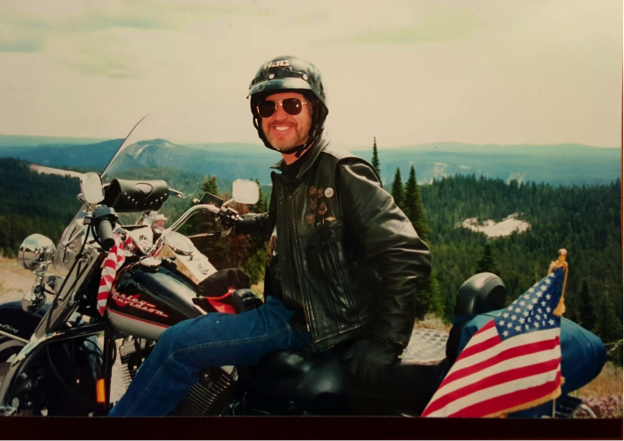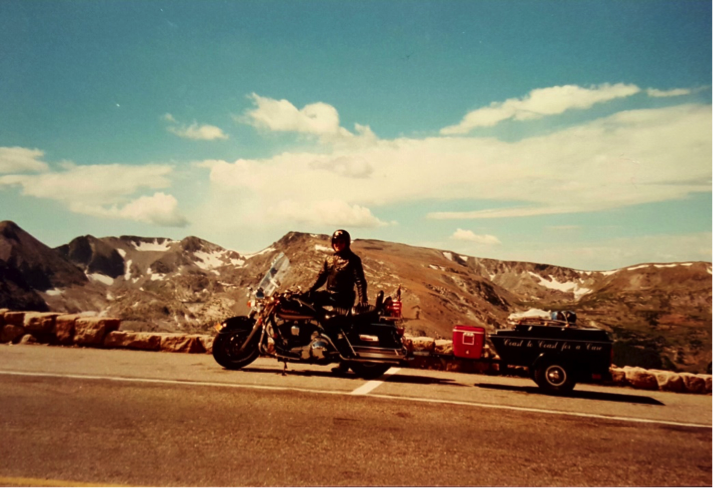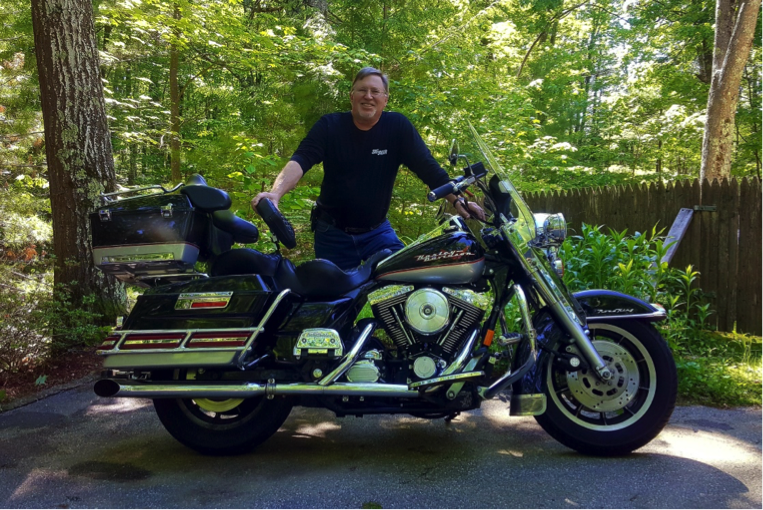Lessons from Lymphoma -1994 to 2017
encontrar mi
On May 6, 1994 I was diagnosed with Stage 4 non-Hodgkin’s lymphoma (low grade follicular). After 6 months of chemo I expected 2 to 4 years of remission and 10 more years of life – pretty normal based on treatment options in those days. But here is the hook – not only am I alive after 23 years, but I have not had any treatment since and have no evidence of disease. I’m 71 and playing with house money.
THE DIAGNOSIS AND FIRST YEAR
“You have Lymphoma." I didn't know what lymphoma was, but I knew that the "OMA" part was like carcinOMA and melanOMA. The surgeon quickly added, "It's not curable but very treatable." "I'll refer you to an oncologist.” Whatever it was or wasn't, I knew about oncology. And I came to know about non-Hodgkin's lymphoma. I know about CT scans, bone marrow biopsies, blood counts, and chemotherapy. I know that it is in my bone marrow and it probably won't go away forever. I know about depression, anger and fear created by the disease. It is my constant enemy but it has also become a teacher. These are some of the lessons I have learned so far:
Good health is an illusion
My lymphoma began a long time before the diagnosis, perhaps years. With the exception of one swollen lymph node, I did not feel "sick" at any time from lymphoma prior to diagnosis, and I have not felt "sick" since the diagnosis. Anyone could have my lymphoma right now and not know it. We don't know what causes it, so prevention is not directly possible. How many others walk around feeling healthy and yet carry a life threatening illness? Good health is an illusion and outside our direct control.
The abyss is deeper than I ever could have imagined.
When the surgeon pronounced the word "lymphoma" my chest felt as if all the blood were suddenly being sucked downward. This feeling recurred and I know it to be a physical sign of terror. Alone in the hospital room that first night, I could find no emotional relief, nothing to hold on to. Somehow morning arrived, and I insisted upon being released no matter what the doctor preferred. Anne, my partner, took me home and was a source of strength, but I couldn't bring her strength inside me where it hurt. I remembered my Mom's doctor saying her cancer was "treatable but not curable." She died 3 months later.
I was confronting my mortality and was deep in the abyss. Terror waves washed over me out of nowhere - my chest got tight, my breath shallow, my hands were weak and shaky. A word on TV could trigger it - anything about life length, a person's worth or death. Questions, Questions! Why this now, I'm just getting on my feet? How can I ever live alone? How can I help my kids with this? How will I concentrate at work? How do I tell my friends? When I have chemotherapy, will I lose my hair? I always wanted a chance to be heroic, to be truly tested. Is this my chance? Instead, why couldn't I save someone by running into a burning building?
It gets better with time.
The abyss felt like it lasted forever but I actually began to feel better on the third day. It was early that morning when I opened the shades to see the sun. The stereo was on and the music felt good. It was the first time I realized that I was feeling better than the day before, that there was a possibility of coming out of the abyss. At a garden supply shop I sat in an unfinished Adirondack chair facing the sun while smelling the dampness of growing plants. I scooped up a handful of wood chips and held them to my nose, deeply inhaling while I felt the texture. It was rough and cool. I moved close to the flowers and looked at the intricacy and, again, inhaled the fragrance. This was life asserting itself, telling me,”come back to the present, leave the pain and terror, forget about tomorrow, live fully today."
Sown seeds come back as fruit - you are not alone.
Calls and cards began to descend. Friends, family and acquaintances all reached out. It felt as if I was being lifted up by dozens of hands and carried forward. I have touched many lives and those people reached out to say thank you and offer support. My 11-year-old daughter wrote to me daily. My ex-wife said, "don't worry about support payments." Flowers and stuffed animals also arrived. The evening I received the diagnosis one of my first desires was to speak with someone with lymphoma to learn how they cope. Within a week I had found two lymphoma survivors who inspired me with their stories and gave me hope and courage. Within my own organization and professional relationships are eight people who live with cancer, about whom I had never been aware. Each is a member of the survivor family. Each has been to the abyss and rejoined the living. Each reached out to me to help the next survivor move forward.
Cancer is not for sissies, life goes on.
Tests eventually revealed stage 4 non-Hodgkin’s lymphoma, too advanced for radiation, but not advanced enough for chemotherapy. Chemo is like bug spray in a garden. You don’t spray when there is one bug but if you wait too long your veggies will be gone. The time in between is called “watchful waiting” among the cancer crowd. I would eventually experience six months of watchful waiting and during that time I went on one of the most amazing adventures of my life.
When I arrived home from the hospital I literally hugged my new 94 Harley- Davidson Road King that arrived two weeks earlier, after nearly a year on special order. Before the surgery/biopsy I was planning a cross country ride. I would complete that ride during the period of watchful waiting before chemotherapy.
The dream began at age 10 when I discovered a Harley accessory catalogue. I had carefully planned just what my bike would get for special touches and dreamed of riding around the country helping the downtrodden – sort of a cross between a cowboy, a social worker and a cop. Motorcycles represented freedom, individuality, strength and participation in life rather than observing it through a windshield. I was pretty much a dork as a kid so my fantasy world always included a more masculine persona and a Harley helped.
Picking up the new bike was one of the most joyous events of my adult life. Not as good as a new baby but on a par with marrying a beautiful woman. It was my sixth bike in 20 years but it felt huge. It weighed 750 lbs with a tombstone windscreen (no radio, thank you very much, listen to the engine!) roomy saddle bags, after market pipes (can you hear me now?) and a $600 custom leather touring seat. This last item was a big investment but if I was going to tour the country I did not want to suffer from butt fatigue. Leather in not traditionally used on bike seats because it isn’t waterproof so I had to buy a rain cover and keep a watchful eye on the clouds. In exchange I sat in breathable comfort with the smell and creaking of new leather. Maybe it helped address the latent cowboy fantasy from my youth. When I fired the bike up for its first ride, I felt both intimidated and powerful. The intimidation ended when I eased out the clutch and this giant became almost weightless as the engine took control. On this day I was physically fit, happy, and as far as I could tell disease free.
Remission after successful chemo was usually two to four years for my type of lymphoma but I wasn’t concerned about that. My focus was this summer, this bike and this ride. My bike trip dream was a statement that - cancer is not for sissies, life goes on - and I was going be an active participant. I immersed myself in the planning and equipment details. I bought a small trailer to carry camping gear and a cooler - it smoothly tagged along behind the bike. I contacted the Leukemia & Lymphoma Society and suggested that I could do my trip as a fund raiser. They were excited and soon the black trailer had the white lettered goal added to each side – Coast to Coast for a Cure. My 15 minutes of fame was about to begin. The Society contacted the press and soon I was interviewed by WMUR, NPR, and the area newspapers. Photos and articles appeared. My message was, “Life is uncertain, if you have a dream, do it now.” We raised thousands of dollars for research.
My cross country bike ride began on July 30, 1994. I was accompanied by Anne, who had been my emotional anchor since the diagnosis. She was a bright adventurer who was effective at pointing out both emotional pitfalls and road hazards, essential assists for my life at the time. The trip spanned 9,300 miles in 35 days - Seattle, San Francisco, Denver and home. It included stops in Iowa to watch Seth Thomas cut corn in a field and process it into canned corn in a local factory; the arrest of a semi-clad girl at a Sturgis, South Dakota, bike rally; a difficult encounter with a park ranger in Yellowstone warning us about food storage and grizzly bears; watching whales in the Pacific ocean from California cliff sides; hugging 2,000 year old redwoods; roaring past a thousand miles of corn and soy bean plants; sneaking up on big horn sheep near patches of August snow at 12,000 feet; riding an oceanside bridge in Big Sur; and the most memorable site for me, Mt. St. Helens, which blew itself up 14 years earlier.
When asked about the best part of the trip, I always say Mt. St. Helens. I knew the history, and even had a jar of its volcanic ash, but seeing it in person brought home the enormity of the destruction. Beyond destruction, the area was obliterated. But when I visited I was amazed that the mountain was coming back. There were little fish in Spirit Lake and rodents and small trees and birds and even flowers. Life was reasserting itself. And I related to the process of small steps back toward life. I had begun my small steps and, although I would struggle with dark moments and further steps down the road, this bike trip was the beginning.
Beyond the expected statistics, I have enjoyed 23 years of remission. Each day the mirror reveals a normal looking person. Yet even as that image of health stares back at me, I'm aware that a life threatening illness could still lurk inside. But the river of life sweeps me forward and when thoughts of the disease try to pull me down, I swim harder. Each morning I shower, dress and begin an active day. I plant seeds in the garden, adore my children, complain about taxes, devour the news, make love as often as possible and ride that same 94 Harley.
YEAR TWO THROUGH TWENTY THREE
Looking into the abyss of mortality changed me in ways I didn’t anticipate and some of them weren’t easy for my family and friends to watch. On the positive side I focused on getting the most out of every day and took my eleven year old daughter to Scotland where we created delightful memories. But I became impatient when dealing with what I saw as bullshit at work and I started making waves. It eventually cost me my career. Looking at a limited life expectancy encouraged me to reduce by retirement contributions and I put the money into racing cars. This kind of behavior lasted several years until it dawned me that I might live to retirement age and I better start saving money and find a different normal.
My mortality issues didn’t disappear but eventually lymphoma faded into the background of my life and I sometimes forgot about it; I even stopped getting annual checkups for many years. (I received a clean bill of health for 2017.) I am of aware of TIME and I focus on the quality of my relationships, connecting more with those I enjoy and detaching from those that don’t work. People connections are the best part of each day.
One relationship I continue is with my 23 year old Harley Road King, the Chrome Mistress.


